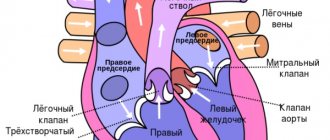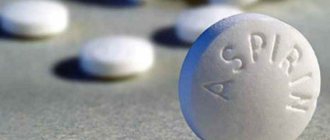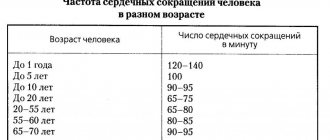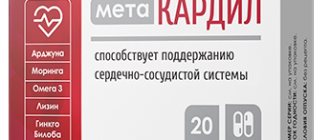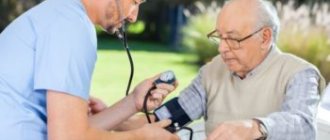Cardiovascular diseases are at the top of the list of causes of death. Often people don't pay much attention to taking care of their heart until problems arise. However, the number of strokes and heart attacks recorded in young people is steadily increasing.
Therefore, it is important to take care of the health of the heart and blood vessels in a timely manner, strengthen them through physical activity and proper nutrition.
Why do you need to train your heart and blood vessels?
Physical activity has a healing effect on the body:
- Normalizes body weight.
- Serves as a prevention of cardiovascular pathologies.
- Reduces blood pressure and triglyceride levels.
- Reduces the amount of C-reactive protein, which causes inflammation in the body.
- Regulates blood sugar and insulin levels.
- The force of heart contractions during exercise increases, thus training it.
Vessels suffer from constant stress, poor environment, and irregular nutrition. As a result, blood pressure rises and the cardiovascular system is stressed. The current situation cannot be corrected with medications alone; it is important to improve blood circulation, including in the capillaries.
How to strengthen the cardiovascular system with food?
The table for diseases of the cardiovascular system, and especially heart attack, heart failure, should be as correct and useful as possible.
This is achieved by consuming proteins, fats, carbohydrates, vitamins and microelements necessary for the myocardium and blood vessels. Below are foods that improve heart function, lower cholesterol, cleanse blood vessels and prevent cardiovascular diseases. This is the current advice from cardiologists regarding the prevention of cardiac problems.
Based on the WHO (World Health Organization) recommendation, half of the daily protein intake should come from plant proteins. Their content is high in legumes (peas, beans), grain products, soy milk, and cocoa. In between meals, snacking on seeds (sesame) and various types of nuts (hazelnuts) is useful. Meat dishes (it is advisable to use low-fat varieties: chicken, rabbit, veal) are eaten boiled or baked. Dairy products (cheese, cottage cheese, unsweetened yogurt) and eggs are accepted only low-fat.
For fats to benefit the heart, the diet should contain 2.5 times more unsaturated fats than saturated fats. Mackerel, herring, trout, sardines and various vegetable oils (olive, sunflower, cottonseed, soybean) are sources of polyunsaturated fatty acids. They lower cholesterol, triglycerides, thin the blood and reduce blood pressure.
Limit the consumption of quickly digestible carbohydrates (baked goods, sugar, honey), giving preference to various cereals and cereal products. And by eating fresh vegetables and dried fruits (banana, apple, kiwi, peach, dried apricots), plant fruits (berries), you will restore the balance of vitamins, minerals and trace elements that are essential for the functioning of the heart.
A set of exercises for training the heart
There are quite a lot of exercises that involve cardio. The following will benefit you: running, cycling 30 minutes a day, jumping rope, swimming, aerobics, dancing, yoga. It’s also a good idea to walk for at least 20 minutes in the evening, avoid using the elevator, and walk to and from work.
Basic training rules:
- Do not bring your heart rate above 130 beats per minute (optimally 120-130).
- The duration of the lesson should be no more than 60 minutes. (for problems with blood vessels – half an hour).
- Alternate exercise and rest days (it is enough to exercise 2-3 times a week).
- Include running as part of your heart training. It is enough to run 3-4 times a week for 20 minutes. It is important to pay attention to your condition.
- If discomfort occurs, it is better to take up walking.
The following exercises are effective for training the heart and blood vessels, which must be performed without sudden movements:
- When you wake up, raise your arms and legs. Shake them for about 2 minutes. Thanks to this exercise, lymph is redistributed, with its help the body removes waste and toxins. Before going to bed, it is recommended to repeat the vibration of the limbs.
- Swing your legs: lift your left leg to your right hand and vice versa.
- Rotate your arms in different directions (right forward, left backward).
- Crouch next to the door. To do this, hold on to the handles, your knees should be in line with your toes. At first, 5-10 squats are enough, gradually increasing to 100 or more. During the first lessons you do not need to squat deeply, 25-30 cm is enough, after 30 days - deeper. Exercise strengthens the heart muscle, legs and spine.
- Walk on your toes, raising your knees high.
It is good to perform leg movements while lying on your back, imitating riding a bicycle. In the same position, perform scissor-like movements with your legs, holding them at a height of 30-40 cm from the floor.
It is important to do exercises regularly, gradually increasing the load. After classes, be sure to do relaxing exercises: the muscles should increase, the heart and blood vessels should strengthen.
In order for blood to move upward through the veins more intensely, you need to train the leg muscles. For example, using Nordic walking. Steps should be rhythmic, natural, accompanied by the work of arms and legs.
In order to strengthen the blood vessels of the legs, bend forward, keeping the legs straight. It is advisable to touch the floor with your fingers. Slow running is beneficial. It's good to exercise in the fresh air.
To restore blood circulation, it is important to strengthen the neck muscles, as they are often tense, put pressure on the blood vessels, and interfere with normal blood circulation. Rotate your head in each direction for 2-3 minutes, bend forward, simulating chopping wood.
Expert opinion
Cardiologist, Doctor of Medical Sciences, Professor, Head of the Department of Clinical Functional Diagnostics and Scientific Secretary of the Moscow State Medical and Dental University named after. A. I. Evdokimova Yuri Vasyuk:
– Exercise is beneficial for most patients with cardiovascular disease. Exceptions are mainly associated with periods of exacerbation of the disease or its decompensation. Physical education is important even with heart failure, which can be the outcome of any heart and vascular disease. In this condition, the contractility of the heart decreases, and it pumps blood worse; over time, the person experiences shortness of breath, swelling, and other symptoms. Physical exercise is recommended for all patients with chronic heart failure (CHF) if the disease is stable and there is no need for emergency treatment.
Studies have shown that regular physical training for three months improves exercise tolerance and improves the absorption of oxygen by the body. But these positive effects disappear after three weeks if you stop exercising. Therefore, patients with chronic heart failure are recommended to exercise regularly. This is recorded in the official “National Guidelines for the Diagnosis and Treatment of CHF.”
What heart rate is considered normal during training?
To ensure that exercise does not cause harm, it is important to monitor your heart rate. The maximum frequency can be calculated using the formula: 220 – human age. Improvement of the heart and respiratory system occurs at a pulse equal to 50-60% of the maximum value.
An increase in heart rate to 80% of the maximum involves the involvement of a large number of vessels in the process, increased ventilation of the lungs, and an increase in the size of the heart.
Training at a heart rate of 90% of the maximum is permissible only in healthy people and under the supervision of a doctor.
Who is contraindicated for therapeutic exercises for hypertension?
It is strictly forbidden to perform even the simplest exercises for hypertension in the following cases:
- during attacks of angina pectoris;
- with severe arrhythmia;
- immediately after the onset of a hypertensive crisis;
- with pressure readings of 200/110 and above.
It is recommended to stop training immediately if the following symptoms appear:
- accelerated heartbeat;
- dizziness;
- attacks of nausea;
- discomfort in the chest area;
- tinnitus;
- the appearance of black dots, circles and other visual abnormalities before the eyes;
- numbness of the limbs, neck, face;
- severe shortness of breath.
In any case, you can start such activities only after preliminary consultation with your doctor.
Auxiliary products for strengthening the heart muscle
Exercise alone will not be enough to maintain heart muscle health. It is important to provide the body with vitamins and minerals. You can use pharmaceutical drugs or use traditional medicine.
Among medications, Panangin, which contains potassium and magnesium, supports the heart muscle. Its purpose is to improve metabolic processes, prevent premature aging of the myocardium, the development of atherosclerosis, high blood pressure and arrhythmia.
A diet aimed at heart health should include: spinach, lentils, oatmeal, flaxseed oil, bananas, pomegranates, dried fruits, nuts, fish oil.
At home, you can prepare a healing mixture of dried apricots, figs, honey, raisins, walnuts and lemon with peel. Take 250 g of each ingredient, chop and mix. Store in the refrigerator, consume one tablespoon three times a day.
An auxiliary remedy can be an infusion of lemon balm, birch leaves, St. John's wort (10 g of each herb) and fireweed (30 g). Pour one tablespoon of the mixture into 300 ml of boiling water, leave and take 200 ml three times a day.
The correct regimen for a heart patient: the doctor’s top tips
In a person who is accustomed to a certain daily routine, the body functions more smoothly and is less susceptible to diseases.
To strengthen your heart, we advise you to follow the rules as recommended by doctors:
- Sleep at least eight hours a day. During a night's rest, the heart slows down, so the myocardium experiences less stress.
- Physical activity. Daily morning exercises and a complex of therapeutic aerobic gymnastics - at least three to four times a week. The myocardium is a muscle, and the more it is trained, the stronger and more resilient it is.
- Eating the right menu equals health and longevity. Fractionally, five times a day, little by little. A full stomach puts pressure on the autonomic nerves, which are responsible for the functioning of the heart.
- Rejection of bad habits.
- A charge of positive emotions every day. It has been proven that endorphins (hormones of happiness) normalize blood pressure, stimulate the immune system and reduce the negative effects of stress on the body.
Exercise therapy technique according to Shishon
In most cases, hypertension develops against the background of cervical osteochondrosis, when the vertebrae compress the vessel that carries oxygen to the brain. To compensate for hypoxia, the body uses compensatory mechanisms that provoke an increase in blood pressure and an increase in myocardial contractile activity. To eliminate violations, the Shishon method is widely used, the main tasks of which are to normalize vascular activity and stabilize pressure naturally.
Restoration of motor activity in the cervical region using the Shishon technique
Gymnastics for the vessels of the neck consists of a special set of exercises that a hypertensive patient can perform in the intervals between work, sitting at an office desk. Gymnastics for blood vessels should be carried out regularly; daily exercises will take 20–25 minutes.
Basic exercises for hypertension using a unique method:
- "Metronome". In a sitting position, you need to slowly bow your head, alternately reaching for the left and right shoulder joints. When the tension in the neck muscles reaches its maximum, hold the position for 30 seconds.
- "Goose". In a standing position, fix your chin so that it is parallel to your toes, then move your neck forward. We alternately turn the head to the side, smoothly pulling it towards the shoulder. If you feel discomfort, hold the pose for 20 seconds.
- "Spring". Keep your chin close to your chest and hold for 35 seconds. Slowly moving your neck forward, stretch the top of your head up, and hold the pose for 30 seconds.
- "Looking to the Sky" Smoothly turn your head until discomfort appears, hold for 25 seconds. We repeat the movement in the opposite direction.
- "Frame". This technique is almost similar to the previous version, but the shoulder girdle is involved here. We place the palm of the left hand on the right shoulder, while the elbow should always be parallel to the floor. The unused limb is as relaxed as possible.
- "Fakir". The exercise is performed according to the same algorithm, but the patient needs to bend his arms at the elbow joint, clasping his palms above his head.
- "Heron". Place your palms on your knees, stretch your chin upward, placing both hands behind your back. Hold the pose for 30 seconds. We complement this option with a stretch consisting of smooth turns of the head, which is fixed with a hand on the shoulder.
No ads 2
Breathing exercises for hypertension
Exercising with high blood pressure in older people can be fraught with various complications. In addition, in old age, as a rule, joint mobility leaves much to be desired. In such a case, we have selected several simple breathing techniques that will help normalize blood pressure without much effort.
- This exercise for hypertension can be done standing or sitting. It is performed in several stages:
- place your hands on your stomach and begin to slowly “inflate” it, taking a long breath;
- through the nose, draw in air through the chest, slightly moving it forward;
- hold your breath for 5–7 seconds;
- slowly release air through your nose, first (relatively) from the stomach, and then from the lungs;
- after pumping out the air, hold your breath for another 8-10 seconds;
- rest for 1–1.5 minutes, restoring your breathing, and repeat the exercise 2 more times.
- The following exercise for hypertension is performed according to a similar principle, but with a number of differences. Firstly, there is no need to hold your breath after taking in air. Secondly, the exhalation should be very long (2 times longer than the inhalation). And thirdly, breathing cycles are performed one after another, without breaks.
- This exercise is also carried out in stages:
- press the tip of your tongue to the roof of your mouth and take a deep breath through your nose, “pumping” air first into your stomach, then into your chest;
- at the peak of inhalation, bring your shoulder blades together, as if spreading your wings;
- hold your breath for 5–7 seconds;
- slowly pump out the air first from the stomach, then from the lungs;
- at the peak of exhalation, lower your chin to your chest, bend your back and hold your breath for another 20–40 seconds;
- rest for 1 minute and repeat the exercise again.
Recommendations for performing gymnastics for hypertension
When conducting this type of exercise, it is very important to adhere to the following rules:
- Therapeutic training sessions should last no longer than 15–20 minutes. Performed for preventive purposes – from 40 to 60 minutes. However, in any case, it is better to start with short sessions.
- It is better to alternate breathing exercises with physical exercises.
- All exercises for hypertension should be performed in a smooth rhythm, without straining the muscles more than necessary.
- The increase in load should occur gradually.
- You need to train regularly (ideally every other day).
- Try to put less stress on your upper body (especially the neck and shoulder area). But extra work won’t hurt your legs.
- It’s better to start with the simplest elements, and as you become more trained and feel normal, you can complicate the training with exercises with your own weight (squats, incline push-ups, lunges, etc.).
- For hypertension stages 2 and 3, exercise therapy is allowed only in a lying or sitting position
Execution Features
At the beginning of the therapeutic course, you should perform simple physical training techniques without excessive stress on the muscular system, which are complemented by breathing and relaxation techniques.
In addition to special physical training, hypertensive patients are recommended to take walks and visit the swimming pool.
At the first stage of hypertension, when well-being improves and tolerance to stress increases, the intensity of exercise gradually increases. Light running and gymnastics are added to the complex, which involve all major muscle groups. A month after the start of exercise therapy, it is performed in full, and the number of repetitions is increased to 8–9 times.
Exercises for stage 2 hypertension become more complicated only after a three-week course. Patients should be careful about heavy loads and avoid running. The number of repetitions increases up to 8 times. And only after a month, on the recommendation of your doctor, you can start running.
No ads 1
In the second and third stages of the pathology, therapeutic exercises can be carried out in a hospital, even when the patient is recommended to rest in bed. Simple exercises are prescribed that involve the muscles of the lower and upper extremities. To train vascular reactions and balance, they resort to the technique of alternately changing the position of the head and neck in space. Breathing techniques can also be performed in a supine position, but to improve pulmonary circulation it is necessary to elevate the upper shoulder girdle.
If your general condition worsens, your heart rate increases to more than 100 beats/min, and does not stabilize after 10 minutes of rest, you should avoid intense exercise and switch to breathing exercises.
Strelnikova’s gymnastics for hypertension
One of the classic methods of combating high blood pressure is breathing exercises, created by the Soviet opera singer and vocal teacher A. N. Strelnikova. Here are some useful exercises for hypertension from this complex.
Head turns
This is a very good exercise for the neck against hypertension. However, it is contraindicated for people with cervical osteochondrosis and other similar disorders. As you inhale, sharply turn your head alternately to the right and left, without long pauses in each position. Exhale through the mouth. After completing 8–10 repetitions, rest for a few seconds. The total number of approaches can reach 10–12.
Ears
This exercise is performed similarly to the previous one, with the only difference that the head should not be turned, but tilted alternately to the right and left shoulder. With each movement, take a deep breath through your nose, then exhale through your mouth. Repeat 8–10 times in 10–12 approaches with breaks.
Hug yourself
We stand up straight, placing our arms bent at the elbows at chest level. As we inhale, we quickly hug ourselves, and as we exhale, we relax. It is very important that at the moment of hugging, the arms do not cross, but are parallel to each other. Repeat 8-10 times.
Cat before jumping
We stand up straight, bring our feet together (but do not touch each other), stretch our arms along the body. While inhaling, we squat sharply, but not low, and at the same time slightly turn our body to the right. We bend our arms at the elbows, clench our palms into fists. Imagine yourself as a cat, grouped up to rush after a careless mouse.
After this, we exhale slowly and smoothly straighten up. Repeat 8 times on each side.
Water pumping Another fairly effective exercise for hypertension. The starting position remains unchanged. As you inhale, we bend forward quickly, rounding your back. There is no need to strain your arms, shoulders and neck. As you exhale, smoothly straighten up. Repeat 10 times in 2-3 approaches with breaks.
